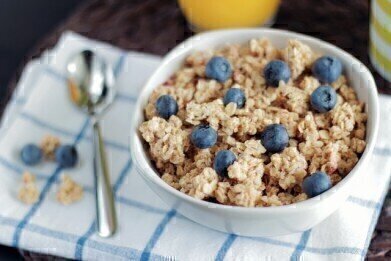Laboratory products
What Properties Are Analysed in Food?
Feb 04 2022
Food analysis is a complex field, with scientists relying on advanced methods, instruments and technologies to characterise samples. Below, we take a closer look at what properties are analysed in food and why they matter.
-
Composition
Compositional analysis is used to identify and quantify the individual chemical constituents of foods. Depending on the sample, scientists may focus on different properties of interest. For example, carbon, nitrogen, hydrogen or sulphur. Compositional analysis is also used to characterise specific molecules (such as sucrose) and types of molecules (such as proteins). Many countries require manufacturers to publish the concentrations of these components on the labels of certain packaged food products.
-
Structure
Structural analysis techniques are used to determine characteristics such as texture, taste, appearance and stability. They’re especially useful when developing new products and simulating the consumer experience.
Food scientists are often concerned with three-dimensional molecular structure and the interactions that take place between molecules. Microscopic structure is another characteristic assessed using structural analysis techniques, with scientists using microscopes to observe the formation of protein aggregates, fat crystals, air cells and emulsion droplets. Macroscopic structural characteristics are also important but can be observed by the human eye.
-
Sensory attributes
Sensory properties are used to determine how a food will interact with its consumer. For example, a dairy brand may use a human testing group to determine the optimum intensity for mint flavour used in an ice-cream product. Similarly, a commercial bakery may take steps to increase the chewiness of a bread product while a meat manufacturer may explore ways to improve the tenderness of a particular cut.
-
Physicochemical properties
Characteristics assessed during physiochemical analysis include rheological and optical properties, as well as stability and flavour. All can affect the quality and taste of the product and its behaviour during production, transport and storage.
Ideally, a food product should feature physicochemical properties suited to the different environmental conditions it’s exposed to during its lifespan. For example, Australian chocolate often contains more stabilisers than British chocolate as it needs to withstand higher temperatures. Assessing physiochemical properties helps manufacturers maintain consistency and enhance the consumer experience.
When it comes to extending the shelf life of food products, freeze drying is one of the most effective techniques. Also known as lyophilisation, the method uses ultra-cold temperatures and pressure changes to transform ice crystals into vapour. This protects both the stability and activity of the product, making it a popular method not only in the food industry but also within the pharmaceutical sector.
Aimee Blakemore, an expert from UK-based scientific equipment manufacturer Biopharma Group, explores how the technique is used in the pharmaceutical sector in ‘Advancements in Freeze Drying Production & the Impacts on Scale, Sustainability and Compliance.’
Digital Edition
Lab Asia 31.6 Dec 2024
December 2024
Chromatography Articles - Sustainable chromatography: Embracing software for greener methods Mass Spectrometry & Spectroscopy Articles - Solving industry challenges for phosphorus containi...
View all digital editions
Events
Jan 22 2025 Tokyo, Japan
Jan 22 2025 Birmingham, UK
Jan 25 2025 San Diego, CA, USA
Jan 27 2025 Dubai, UAE
Jan 29 2025 Tokyo, Japan

.jpg)

















